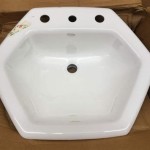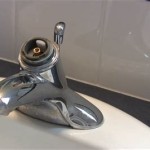What Is The Best Paint To Use For Bathroom Ceiling?
Selecting the appropriate paint for a bathroom ceiling requires careful consideration due to the humid environment. Bathrooms are subjected to significant moisture fluctuations and temperature changes, which can compromise the integrity and appearance of paint over time. The ideal paint will resist moisture, prevent mold and mildew growth, and maintain its finish despite these challenging conditions. This article will explore the various types of paint that are suitable for bathroom ceilings, focusing on their properties, advantages, and disadvantages, allowing for an informed decision when undertaking a bathroom renovation or repaint.
The primary concern when choosing paint for a bathroom ceiling is its ability to withstand moisture. Excessive moisture can lead to peeling, blistering, and the growth of mold and mildew. Mold and mildew are not only unsightly but can also pose health risks. Therefore, paints formulated to resist these problems are crucial for bathroom applications. Furthermore, the finish of the paint plays a significant role in its durability and ease of cleaning. A paint that is easy to clean will help maintain the appearance of the bathroom ceiling and prevent the buildup of soap scum and other residues.
The level of sheen is also a key factor. Different sheens offer varying degrees of moisture resistance and cleanability. Higher sheen levels, such as semi-gloss or gloss, are more resistant to moisture and easier to clean, but they can also highlight imperfections in the ceiling. Matte finishes offer a more subtle appearance but are less resistant to moisture and harder to clean. Striking a balance between aesthetics and functionality is crucial when selecting the appropriate sheen for a bathroom ceiling paint.
Understanding Paint Types for Bathroom Ceilings
Several types of paint are commonly used for bathroom ceilings, each with its unique characteristics. These include latex-based paints, oil-based paints, and specialized bathroom paints. Understanding the properties of each type will help in making an informed decision based on specific needs and preferences.
Latex-based paints, also known as water-based paints, are a popular choice for interior painting due to their ease of application, low odor, and quick drying time. Latex paints are also more environmentally friendly compared to oil-based paints. Modern latex paints offer excellent durability and moisture resistance, making them suitable for bathroom ceilings. However, it is important to choose a high-quality latex paint specifically formulated for bathrooms to ensure optimal performance.
Oil-based paints, while less common than latex paints, offer excellent durability and resistance to moisture. Oil-based paints create a hard, durable finish that is resistant to scratches and stains. They are also less prone to water damage compared to some lower-quality latex paints. However, oil-based paints have several drawbacks, including a strong odor, longer drying time, and the need for mineral spirits for cleanup. Additionally, oil-based paints tend to yellow over time, especially in areas with limited natural light. Due to these drawbacks, oil-based paints are generally not recommended for bathroom ceilings unless specific durability and moisture resistance requirements outweigh the disadvantages.
Specialized bathroom paints are specifically formulated to withstand the humid conditions found in bathrooms. These paints typically contain additives that inhibit the growth of mold and mildew. They also offer excellent moisture resistance and are designed to maintain their finish despite frequent exposure to water and steam. Specialized bathroom paints are available in both latex and oil-based formulations, allowing for selection based on specific preferences. While these paints may be more expensive than standard paints, their superior performance and durability make them a worthwhile investment for bathroom ceilings.
The Importance of Primer
Applying a primer before painting a bathroom ceiling is crucial for several reasons. Primer provides a uniform surface for the paint to adhere to, improving the paint's durability and preventing peeling and blistering. Primer also helps to seal porous surfaces, reducing the amount of paint required to achieve adequate coverage. In bathrooms, primer plays an especially important role in preventing moisture penetration and inhibiting the growth of mold and mildew.
There are several types of primers available, each with its specific properties and applications. Latex primers are suitable for most bathroom ceilings and offer excellent adhesion and moisture resistance. Oil-based primers are more effective at sealing porous surfaces and preventing stains from bleeding through. However, oil-based primers have the same drawbacks as oil-based paints, including a strong odor and longer drying time. For bathroom ceilings, a high-quality latex primer is generally the best choice due to its ease of use, low odor, and excellent moisture resistance.
When selecting a primer for a bathroom ceiling, it is essential to choose one that is specifically formulated for use in humid environments. These primers typically contain additives that inhibit the growth of mold and mildew. They also offer superior moisture resistance compared to standard primers. Applying two coats of primer can provide even better protection against moisture and ensure that the paint adheres properly to the ceiling surface. Proper preparation of the ceiling surface, including cleaning and sanding, is also essential for optimal primer performance.
Selecting the Right Sheen for Bathroom Ceiling Paint
The sheen of the paint refers to the amount of light it reflects. Different sheens affect the appearance and performance of the paint. For bathroom ceilings, the most common sheen levels are flat, matte, eggshell, satin, semi-gloss, and gloss. Each sheen level offers varying degrees of moisture resistance, cleanability, and visual impact. Selecting the appropriate sheen is crucial for achieving the desired aesthetic and functional properties.
Flat and matte sheens have the lowest light reflectivity and provide a non-reflective finish. These sheens are excellent at hiding imperfections in the ceiling surface and creating a soft, subtle appearance. However, flat and matte sheens are less resistant to moisture and harder to clean compared to higher sheen levels. They also tend to show stains and scuffs more easily. Due to their limited moisture resistance and cleanability, flat and matte sheens are generally not recommended for bathroom ceilings.
Eggshell and satin sheens offer a slightly higher level of light reflectivity compared to flat and matte sheens. They provide a smooth, velvety finish that is more resistant to moisture and easier to clean. Eggshell and satin sheens are a good compromise between aesthetics and functionality, offering a balance of visual appeal and durability. These sheens are suitable for bathrooms with good ventilation and minimal moisture exposure.
Semi-gloss and gloss sheens have the highest light reflectivity and provide a shiny, durable finish. These sheens are highly resistant to moisture and easy to clean, making them ideal for bathrooms with high humidity and frequent use. Semi-gloss and gloss sheens are also more resistant to stains and scuffs compared to lower sheen levels. However, they can highlight imperfections in the ceiling surface, making proper preparation and a smooth application essential. For bathroom ceilings that require maximum moisture resistance and frequent cleaning, semi-gloss or gloss sheens are the best choice.
Ultimately, the choice of sheen depends on individual preferences and the specific conditions of the bathroom. Consider the level of humidity, ventilation, and frequency of use when selecting the appropriate sheen for bathroom ceiling paint. If unsure, consulting with a paint professional can provide valuable guidance.
In summary, selecting the best paint for a bathroom ceiling involves understanding the properties of different paint types, the importance of primer, and the impact of sheen levels. Latex-based paints and specialized bathroom paints are generally the preferred choices due to their ease of application, moisture resistance, and low odor. Proper preparation, priming, and the selection of an appropriate sheen level are crucial for achieving a durable and aesthetically pleasing finish.

Best Paint For Steamy Bathroom Ceiling Eco Inc

Best Paint For Bathroom Ceilings

Ceiling Paint For Bathroom Home Painters Toronto

Best Paint For Steamy Bathroom Ceiling Eco Inc

Best Paint For Steamy Bathroom Ceiling Eco Inc

Ceiling Paint For Bathroom Prestige Painting Gta

Ceiling Paint For Bathroom Prestige Painting Gta

The Best Paint For Bathrooms Solved Bob Vila

Ceiling Paint For Bathroom Prestige Painting Gta

Should I Use Flat Paint In A Bathroom Williams Painting
Related Posts







